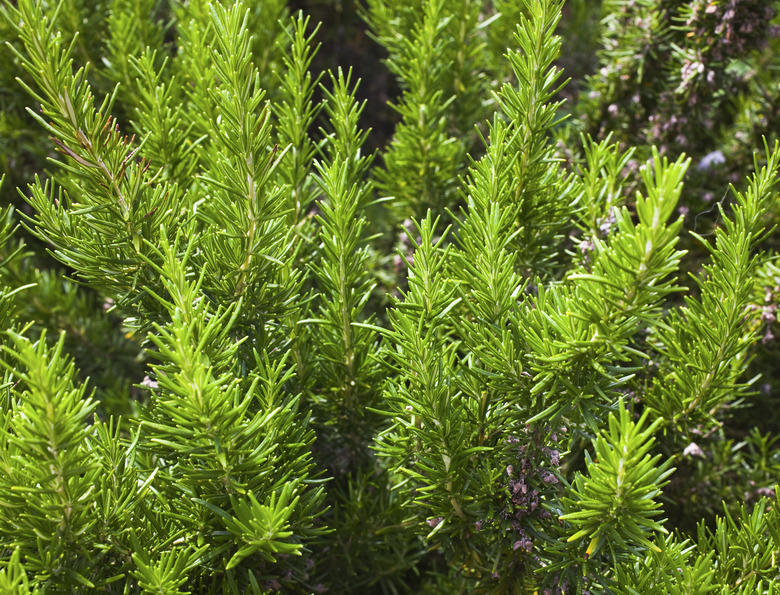How Fast Does Rosemary Grow?
We may receive a commission on purchases made from links.
An herb from the mint family, rosemary (Salvia rosmarinus) is a slow to moderate grower, but the growing conditions can affect the growth rate. Some mature specimens grow to 2 feet tall, but others may reach heights up to 6 feet. It will take several years for a plant to reach its mature size. Growing rosemary in your herb garden produces leaves that are used to flavor poultry, leafy greens, stews, soups and sauces. It grows as a perennial in U.S. Department of Agriculture plant hardiness zones 7 through 11, although some plants survive in zone 6. Zones 7 through 11 encompass most of the southern and southwestern states, as well as the western coastal areas.
Tip
It take at least several years for rosemary to reach its mature height, which varies by cultivar, from 2 feet to 6 feet. Growing conditions can affect the growth rate.
Propagation and Transplanting
Propagation and Transplanting
When grown from seeds, rosemary is slow to cultivate. For optimal growth, use stem cuttings, layering or division when planting. If your rosemary is potted, transplant the shrub twice a year for growth stimulation. If the shrub becomes too large for the pot, prune off the lower 2 inches of roots when the soil is exposed. For indoor gardeners who do not want to worry about pruning for size, a good rosemary cultivar to try is Blue Boy, which grows slowly and stays compact at no more than 2 feet tall.
How Fast Does Rosemary Grow?
How Fast Does Rosemary Grow?
A mature rosemary shrub takes several years to reach its mature height, which ranges from 2 feet to 6 feet, although blooming typically occurs in year 2. Potted rosemary stays smaller, depending on the size of its container. If you want your rosemary plant to grow larger, repot it in a larger container to promote larger growth.
If your rosemary's growth rate slows, try adjusting the sunlight. Rosemary shrubs require six to eight hours of sunlight a day, so if you're growing a plant indoors, you may need additional artificial light from grow lights or a good window with plenty of light. Flowers, which are blue or lilac in color, bloom annually in early spring to summer, with sporadic bloom from some plants during winter.
Rosemary Foliage Pruning
Rosemary Foliage Pruning
Once an outdoor rosemary shrub becomes dense with foliage, it can be pruned back several inches once or twice a year using sanitized pruning shears. After pruning, lay out the strips on a screen to dry before pulling off the spicy leaves and storing them. Topiary or hedge shapes are an option, as rosemary is dense enough to have its size and shape manipulated. One of the best specimens for topiary shaping is the Shimmering Stars rosemary cultivar.
Rosemary Plant Maintenance
Rosemary Plant Maintenance
Rosemary, whether grown indoors or out, requires full sun. When planting rosemary outdoors, allow for 2 to 6 feet of growing height and 3- to 4-foot spacing between specimens. Rosemary doesn't transport well, so it shouldn't be moved once it has reached maturity, although initial transplanting is fine. In winter climates, moderate protection, such as wind-resistant tarps or covers, should be implemented to prevent frost damage.
When it comes to soil, both indoor and outdoor rosemary require well-draining, light soils. They don't grow well in heavy clay soils. Rosemary doesn't need much water to grow well. Let the soil dry out before you water it again to avoid overwatering the herb and causing root rot.
